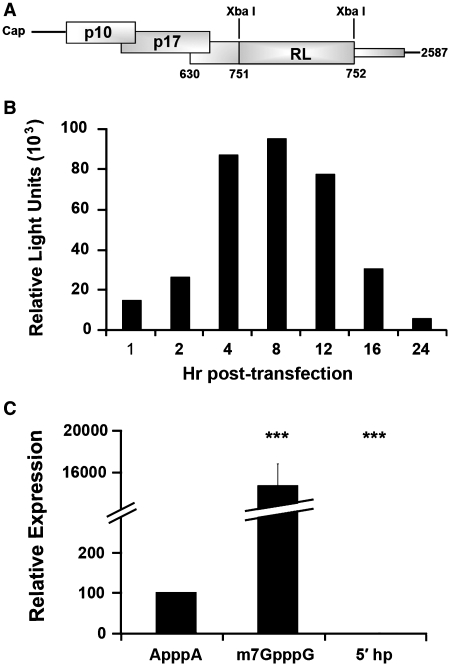Figure 2.
RNA transfection with a σC-RL chimera functions as an efficient reporter of σC expression. (A) Diagram depicting the mRNA generated by T7 polymerase in vitro transcription of pσC-RL, indicating the location of the modified RL ORF (lacking its own AUG start codon but containing its stop codon) inserted between S1 nucleotides 751 and 752, in-frame with the σC ORF. The thin shaded rectangle depicts the presence of sequences corresponding to the 3′-end of the σC ORF that are not translated due to the presence of the upstream RL stop codon. (B) QM5 cells were transfected with in vitro transcribed capped σC-RL RNA and cell lysates were harvested at the indicated times and analyzed for RL activity. Results are from a single representative experiment conducted in duplicate. (C) QM5 cells were transfected with σC-RL RNA in vitro transcribed either with a functional cap analog (m7GpppG), a nonfunctional cap analog (ApppA), or with a stable hairpin structure inserted between S1 nucleotides 1 and 2 downstream of a functional cap analog (5′ hp). Cell lysates were harvested 4 h post-transfection and analyzed for luciferase activity. Results are reported as mean ± SE (n = 3–6) of the relative level of σC-RL translation, normalized to the parental σC-RL construct with a functional cap analog or a non-functional cap analog. Expression levels significantly different from the parental construct (***P < 0.001) are indicated.

